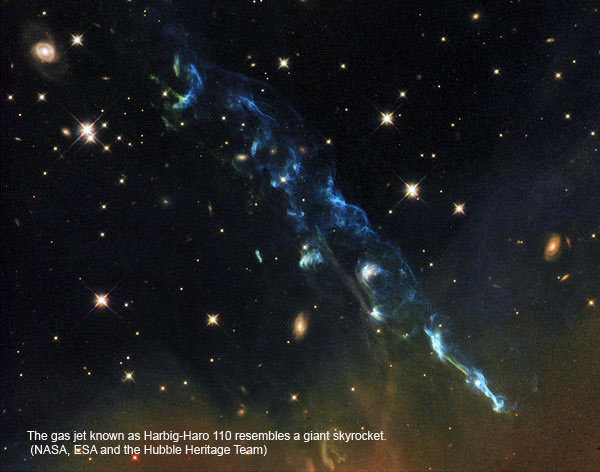
Honoring the Fourth of July, NASA Tuesday released a striking new image of Herbig-Haro 110, a geyser of hot gas from a newborn star that looks remarkably like an Earth-bound skyrocket. HH 110 is a member of a family of Herbig-Haro objects that generally consist of two jets of hot gas ejected in opposite directions from a forming star. Astronomers think that the jets are fueled by gas falling into a young star from a surrounding disc of dust and gas. The gravitational heating causes jets of gas to be ejected at high speeds.
The jets slow down and cool off a bit, only to have pulses of gas emitted after them crash from behind. The friction of the collision heats the gas again, causing it to shine brightly. The result is a series of pulses that extend, in this case, over half a light-year.
HH 110, which is 1,300 light-years from Earth, has only one jet, and researchers have been unable to find its parent star. They now believe that this is because it is generated by another Herbig-Haro object. The team now believes that the nearby HH 279 jet grazes an immovable obstacle, a much denser, colder cloud core, and gets diverted off at about a 60-degree angle. The jet goes dark and then re-emerges, becoming HH 110.
The newly released image is a composite of data taken by the Hubble Orbiting Telescope Advanced Camera for Surveys in 2004 and 2005 and its Wide Field Camera 3 in 2011.
Quelle: NASA
6373 Views
